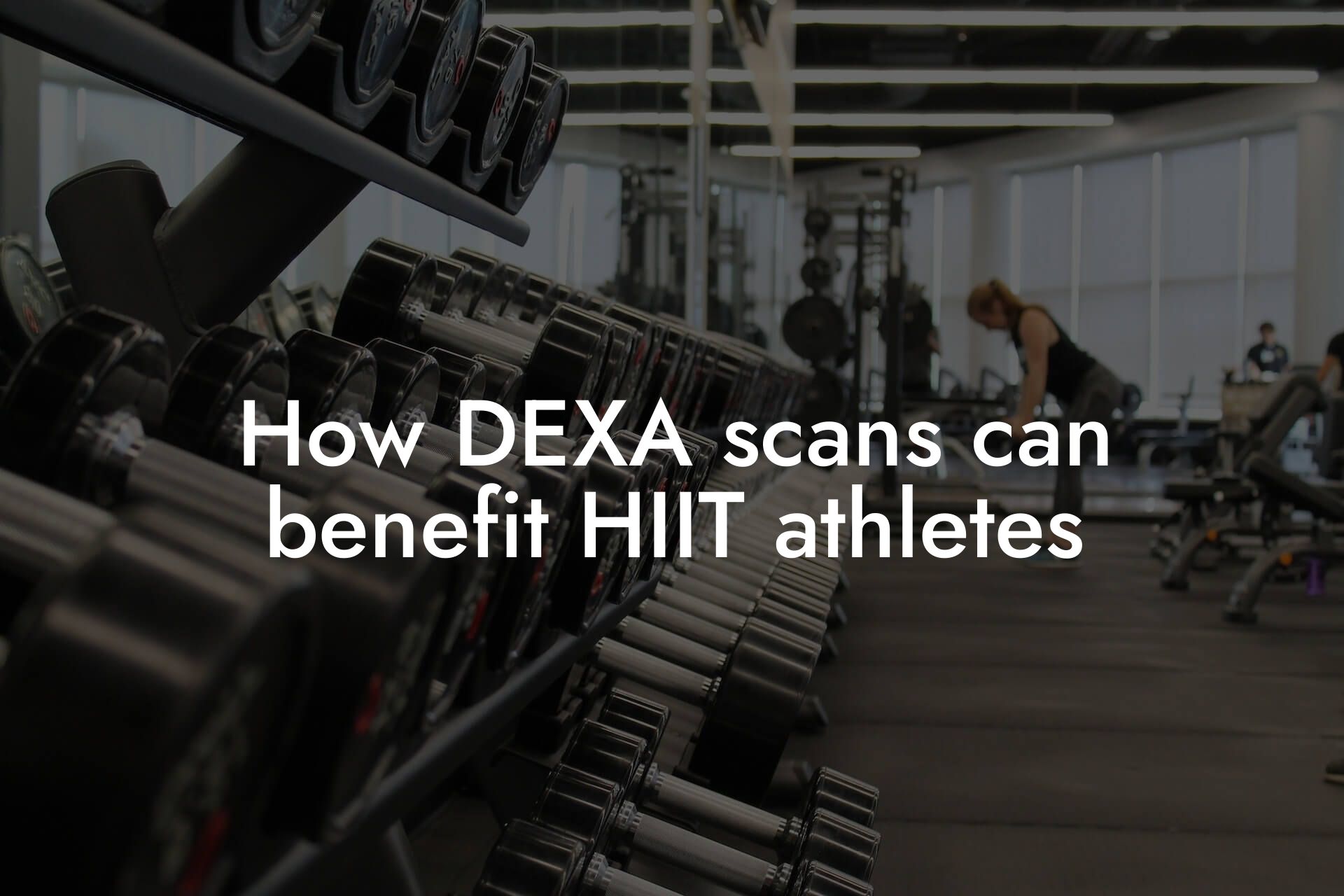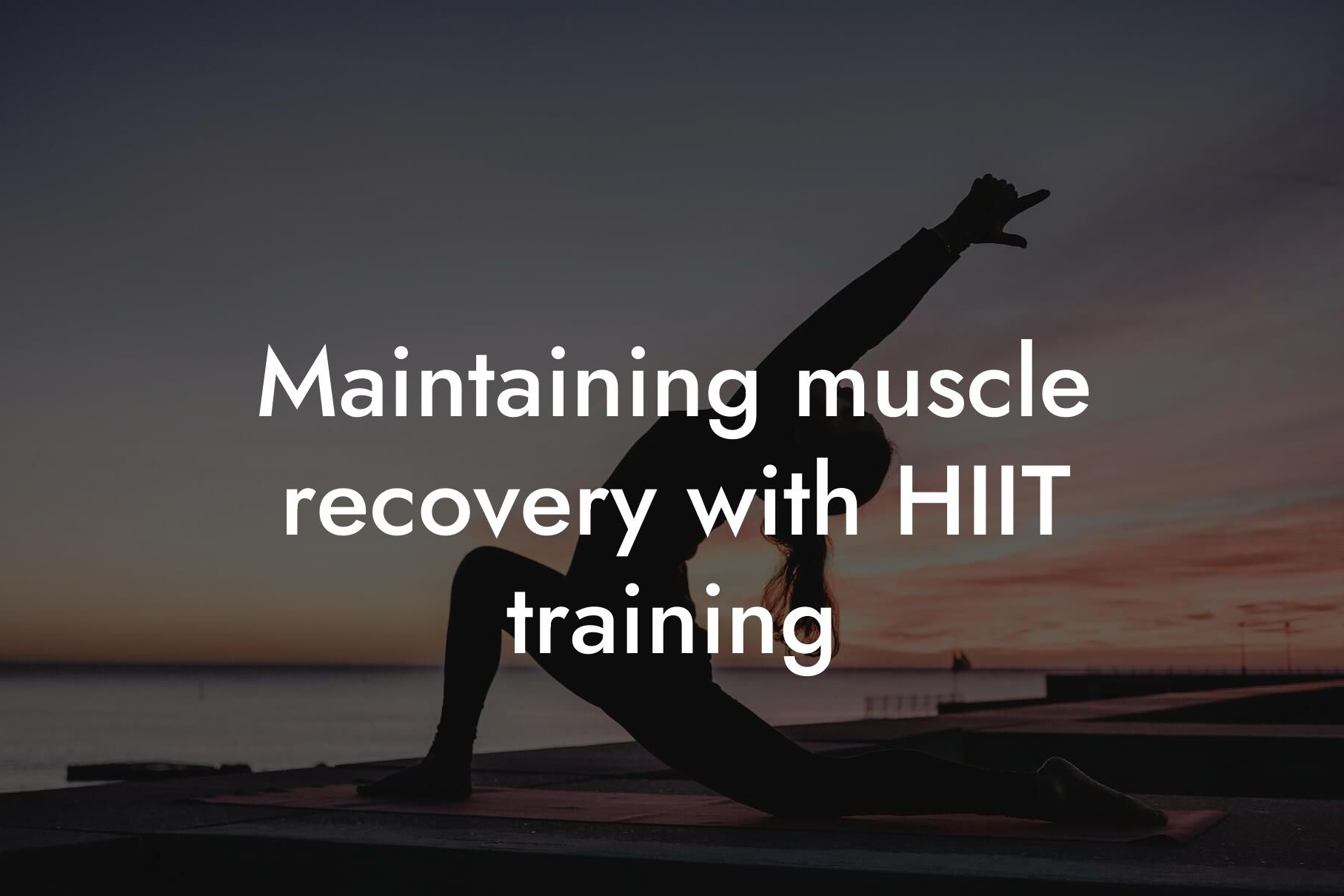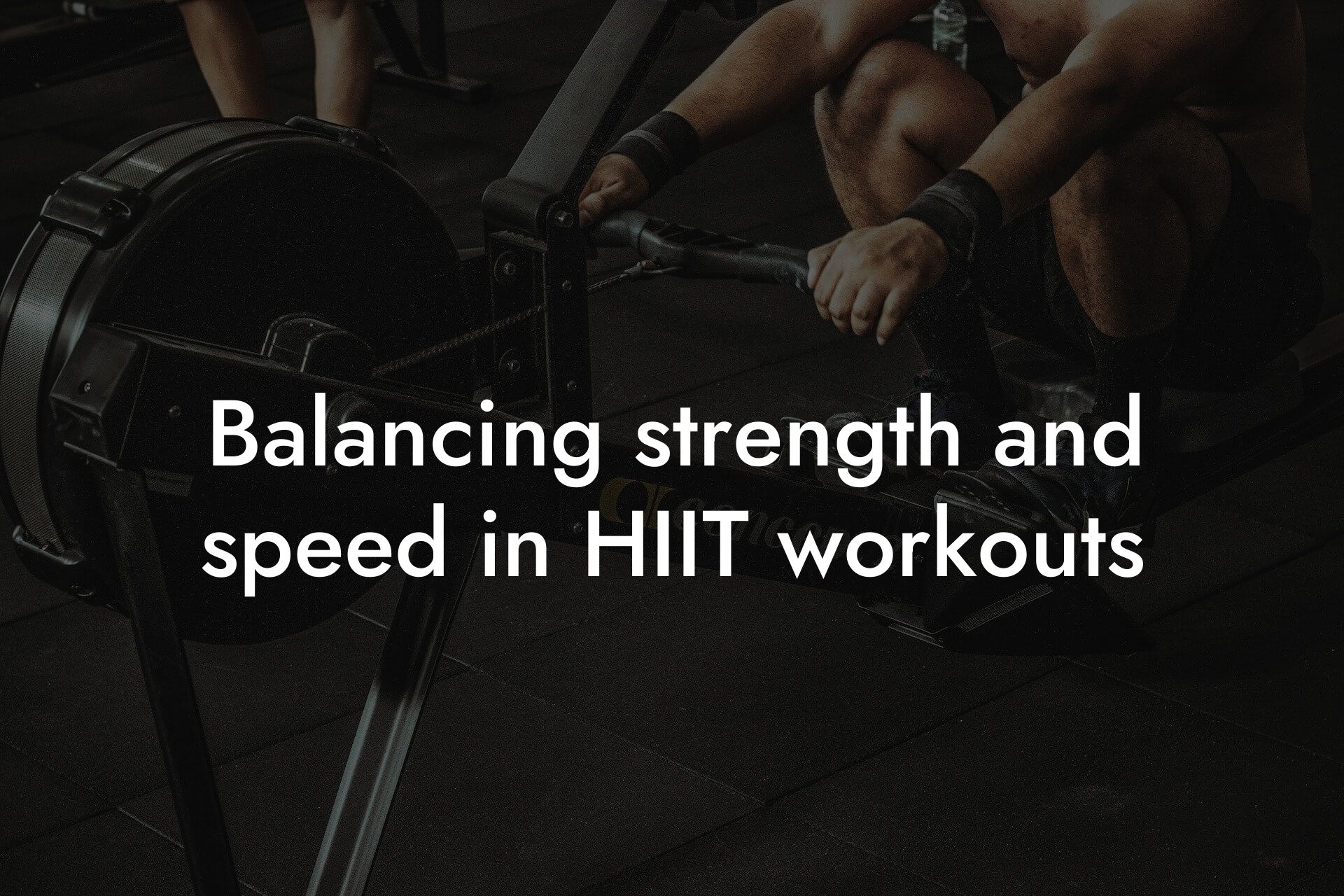As a high-earning professional, you understand the importance of maintaining a healthy and fit physique. High-Intensity Interval Training (HIIT) is an excellent way to improve cardiovascular health, increase muscle mass, and boost metabolism. However, to get the most out of your HIIT workouts, it's essential to focus on reducing body fat. In this article, we'll explore the benefits of reducing body fat, how to calculate your body fat percentage, and provide a comprehensive guide on how to reduce body fat for better HIIT workout results.
Table of Contents
Why Reducing Body Fat is Crucial for HIIT Workouts
Excess body fat can hinder your HIIT workout performance and overall health. When you have a high percentage of body fat, it can lead to increased inflammation, reduced insulin sensitivity, and decreased mobility. This can make it challenging to perform HIIT exercises efficiently, increasing the risk of injury and burnout. By reducing body fat, you'll experience improved cardiovascular health, enhanced athletic performance, and a more toned physique.
Calculating Your Body Fat Percentage
Before you start working on reducing body fat, it's essential to know your current body fat percentage. There are several methods to calculate body fat, including:
1. Dual-Energy X-ray Absorptiometry (DEXA): This is a highly accurate method that uses X-rays to measure bone density and body composition. At Tano Performance Group, we use DEXA machines to provide our clients with a comprehensive body assessment.
2. Skinfold Measurements: This method involves measuring the thickness of your skin folds at specific points on your body using a skinfold caliper.
3. Bioelectrical Impedance Analysis (BIA): This method uses a device that sends an electrical current through your body to measure resistance, which is then used to estimate body fat percentage.
4. Hydrostatic Weighing: This method involves weighing yourself underwater to measure your body density, which can then be used to estimate body fat percentage.
Setting Realistic Goals for Body Fat Reduction
Before you start working on reducing body fat, it's essential to set realistic goals. Aim to lose 0.5-1% body fat per week for a sustainable and healthy weight loss. This may seem slow, but it's a more maintainable pace that will help you achieve long-term results. Additionally, focus on losing fat while maintaining or gaining muscle mass to improve overall body composition.
Nutrition for Body Fat Reduction
A well-balanced diet is crucial for reducing body fat. Focus on whole, unprocessed foods, including:
1. Lean Protein: Include lean protein sources like chicken, fish, and tofu in your diet to help build and repair muscle tissue.
2. Complex Carbohydrates: Focus on whole grains, fruits, and vegetables, which provide sustained energy and fiber.
3. Healthy Fats: Include sources of healthy fats like nuts, seeds, and avocados in your diet to support hormone production and overall health.
Avoid or limit processed foods, sugary drinks, and saturated fats, which can hinder weight loss and overall health. Additionally, stay hydrated by drinking plenty of water throughout the day.
Exercise for Body Fat Reduction
In addition to a well-balanced diet, regular exercise is essential for reducing body fat. Focus on:
1. HIIT Workouts: Incorporate HIIT workouts into your routine, which involve short bursts of high-intensity exercise followed by brief periods of rest.
2. Resistance Training: Include resistance exercises to build and maintain muscle mass, which will help boost metabolism and burn fat.
3. Cardiovascular Exercise: Incorporate low-to-moderate intensity cardiovascular exercise, such as jogging or cycling, to improve cardiovascular health and burn calories.
Progress Tracking and Accountability
To stay motivated and track your progress, it's essential to:
1. Take Progress Photos: Take regular progress photos to track visual changes in your body.
2. Monitor Body Fat Percentage: Regularly track your body fat percentage using a method like DEXA or skinfold measurements.
3. Keep a Food Diary: Record your daily food intake to track your nutrition and identify areas for improvement.
4. Find an Accountability Partner: Share your goals with a friend or family member and ask them to hold you accountable.
Common Mistakes to Avoid
When working on reducing body fat, it's essential to avoid common mistakes, including:
1. Crash Dieting: Avoid extreme calorie restriction, which can lead to muscle loss and a slower metabolism.
2. Overexercising: Don't overdo it with exercise, as this can lead to burnout and injury.
3. Lack of Patience: Remember that reducing body fat takes time and patience. Avoid getting discouraged by slow progress and stay focused on your long-term goals.
Reducing body fat is a crucial step in achieving better HIIT workout results. By calculating your body fat percentage, setting realistic goals, and focusing on a well-balanced diet and regular exercise, you'll be on your way to a leaner, healthier physique. Remember to track your progress, stay accountable, and avoid common mistakes to ensure long-term success. At Tano Performance Group, we're committed to helping high-earning professionals like you achieve their fitness goals through our comprehensive body assessments and personalized guidance.
Frequently Asked Questions
What is the ideal body fat percentage for HIIT workouts?
For men, an ideal body fat percentage for HIIT workouts is between 10-15%, while for women, it's between 15-20%. Having a lower body fat percentage can improve your overall performance and increase the effectiveness of your HIIT workouts.
Why is reducing body fat important for HIIT workouts?
Reducing body fat is essential for HIIT workouts because it allows for better mobility, flexibility, and overall performance. Excess body fat can hinder your ability to move quickly and efficiently, making it more challenging to get the most out of your HIIT workouts.
How does body fat affect my HIIT workout results?
Body fat can affect your HIIT workout results by slowing you down, reducing your endurance, and making it more difficult to recover between exercises. The more body fat you have, the more energy you'll expend on carrying excess weight, rather than generating power and speed.
What are the benefits of reducing body fat for HIIT workouts?
The benefits of reducing body fat for HIIT workouts include improved performance, increased endurance, enhanced recovery, and better overall results. With a lower body fat percentage, you'll be able to push yourself harder, recover faster, and achieve your fitness goals more efficiently.
How can I measure my body fat percentage?
There are several ways to measure body fat percentage, including skinfold measurements, bioelectrical impedance analysis (BIA), dual-energy X-ray absorptiometry (DXA), and hydrostatic weighing. You can also use a body fat caliper to measure your skinfold thickness and estimate your body fat percentage.
What is the best way to reduce body fat for HIIT workouts?
The best way to reduce body fat for HIIT workouts is through a combination of a healthy diet, regular cardio exercise, and strength training. Focus on consuming whole, nutrient-dense foods, and aim to create a calorie deficit to promote weight loss and fat reduction.
How long does it take to reduce body fat for HIIT workouts?
The amount of time it takes to reduce body fat for HIIT workouts depends on several factors, including your starting point, diet, exercise routine, and consistency. With a dedicated approach, you can start to see noticeable improvements in 6-12 weeks.
What role does nutrition play in reducing body fat for HIIT workouts?
Nutrition plays a critical role in reducing body fat for HIIT workouts. Focus on consuming whole, nutrient-dense foods, including lean proteins, complex carbohydrates, and healthy fats. Aim to create a calorie deficit to promote weight loss and fat reduction.
What are some effective exercises for reducing body fat?
Some effective exercises for reducing body fat include HIIT workouts, strength training, cardio exercises like running, cycling, and swimming, and high-intensity interval training (HIIT) with weights. Aim to incorporate a mix of exercises that target different muscle groups and promote overall fat loss.
How often should I do HIIT workouts to reduce body fat?
Aim to do HIIT workouts 2-3 times per week, with at least one day of rest in between. This will allow your body to recover and adapt to the intense demands of HIIT training.
Can I reduce body fat without doing HIIT workouts?
Yes, you can reduce body fat without doing HIIT workouts. However, HIIT workouts are an effective way to burn calories, improve cardiovascular fitness, and increase muscle mass, all of which can help with fat loss.
How does sleep affect my ability to reduce body fat for HIIT workouts?
Sleep plays a critical role in your ability to reduce body fat for HIIT workouts. During sleep, your body repairs and rebuilds muscle tissue, regulates hormones, and processes nutrients. Aim for 7-9 hours of sleep per night to support your fat loss goals.
What role does stress play in reducing body fat for HIIT workouts?
Stress can hinder your ability to reduce body fat for HIIT workouts by promoting the storage of belly fat, increasing cortisol levels, and reducing motivation. Aim to manage stress through techniques like meditation, yoga, and deep breathing exercises.
Can I reduce body fat too quickly?
Yes, it's possible to reduce body fat too quickly. Crash dieting and extreme calorie restriction can lead to muscle loss, nutrient deficiencies, and a slowed metabolism. Aim for a sustainable rate of weight loss, around 1-2 pounds per week.
How can I maintain my motivation to reduce body fat for HIIT workouts?
Stay motivated by setting realistic goals, tracking your progress, and celebrating small victories along the way. Find a workout buddy or join a fitness community to stay accountable and inspired.
What are some common mistakes people make when trying to reduce body fat for HIIT workouts?
Common mistakes include crash dieting, overtraining, neglecting strength training, and failing to listen to their bodies. Avoid these mistakes by focusing on sustainable lifestyle changes and a balanced approach to fitness.
How can I incorporate strength training into my HIIT workout routine?
Incorporate strength training into your HIIT workout routine by adding exercises that target different muscle groups, such as squats, lunges, push-ups, and rows. Aim to do strength training exercises 2-3 times per week.
What are some effective ways to track my progress when reducing body fat for HIIT workouts?
Effective ways to track your progress include taking body measurements, tracking your weight, monitoring your body fat percentage, and taking progress photos. Use a food diary or mobile app to track your nutrition and exercise habits.
How can I overcome plateaus when reducing body fat for HIIT workouts?
Overcome plateaus by adjusting your diet, increasing the intensity of your workouts, and incorporating new exercises into your routine. Take rest days as needed, and focus on active recovery techniques like foam rolling and stretching.
What are some common myths about reducing body fat for HIIT workouts?
Common myths include the idea that you need to do hours of cardio per day, that you can spot reduce fat, and that you need to eliminate entire food groups to lose weight. Focus on a balanced approach to fitness and nutrition, and avoid falling for these myths.
How can I stay hydrated during HIIT workouts?
Stay hydrated during HIIT workouts by drinking plenty of water before, during, and after exercise. Aim to drink at least 8-10 glasses of water per day, and consider incorporating electrolyte-rich drinks or supplements to support your hydration needs.
What are some effective ways to reduce inflammation after HIIT workouts?
Effective ways to reduce inflammation after HIIT workouts include incorporating anti-inflammatory foods into your diet, taking omega-3 supplements, and using techniques like foam rolling and stretching to promote recovery.
How can I incorporate active recovery into my HIIT workout routine?
Incorporate active recovery into your HIIT workout routine by including low-intensity exercises like yoga, cycling, or swimming on your rest days. This will help promote blood flow, reduce muscle soreness, and support overall recovery.
What are some effective ways to reduce muscle soreness after HIIT workouts?
Effective ways to reduce muscle soreness after HIIT workouts include incorporating stretching and foam rolling into your routine, taking warm baths or showers, and using compression garments or recovery sleeves.
Here are some related articles you might love...
- How DEXA scans can benefit HIIT athletes
- Maintaining muscle recovery with HIIT training
- Balancing strength and speed in HIIT workouts
- Improving cardiovascular endurance with HIIT
- The role of body composition in HIIT performance
- The importance of bone density in HIIT fitness
- Strength training tips to enhance HIIT performance
- Preventing injuries during HIIT sessions
- Nutrition strategies for HIIT enthusiasts
Zak Faulkner
Zak Faulkner is a leading authority in the realm of physical health and body composition analysis, with over 15 years of experience helping professionals optimise their fitness and well-being. As one the experts behind Tano Performance Group, Zak has dedicated his career to providing in-depth, science-backed insights that empower clients to elevate their physical performance and overall health.
With extensive knowledge of DEXA technology, Zak specializes in delivering comprehensive body assessments that offer precise data on body fat, muscle mass, bone density, and overall physique. His expertise enables individuals to make informed decisions and achieve their fitness goals with accuracy and confidence. Zak’s approach is rooted in a deep understanding of human physiology, combined with a passion for helping clients unlock their full potential through personalised strategies.
Over the years, Zak has earned a reputation for his commitment to excellence, precision, and client-focused service. His guidance is trusted by top professionals who demand the best when it comes to their health. Whether advising on fitness programs, nutritional strategies, or long-term wellness plans, Zak Faulkner’s insights are a valuable resource for anyone serious about taking their health and fitness to the next level.
At Tano Performance Group, Zak continues to lead our Content Team revolutionising how professionals approach their physical health, offering unparalleled expertise that drives real results.




